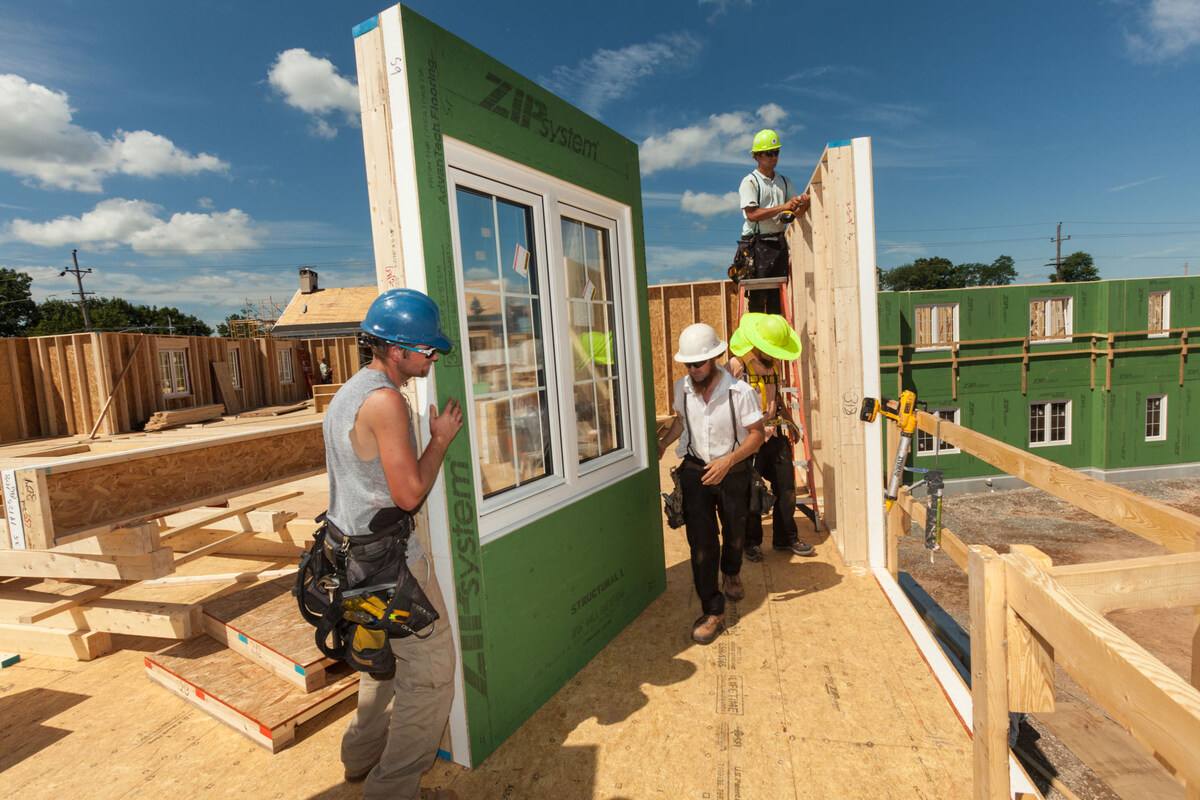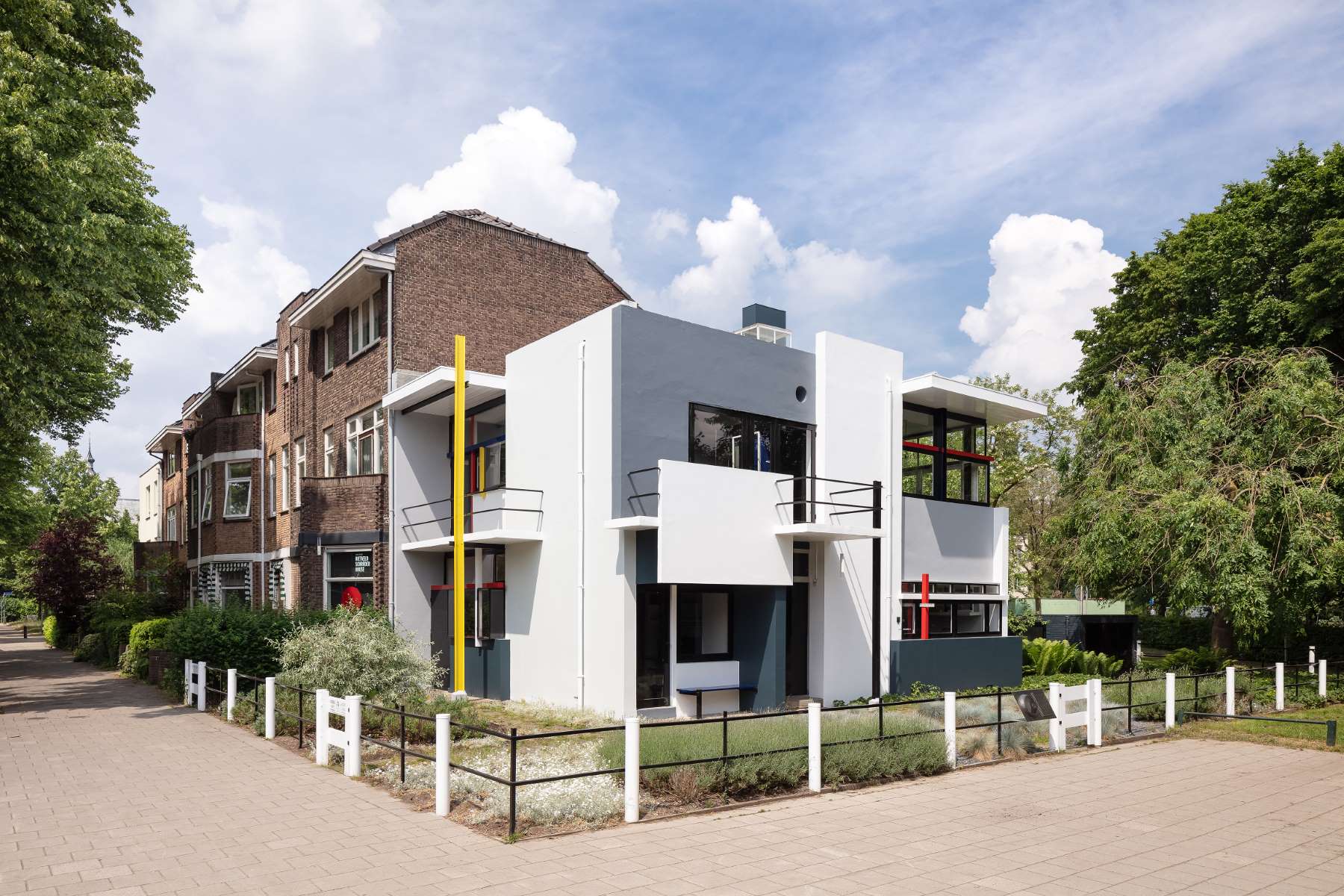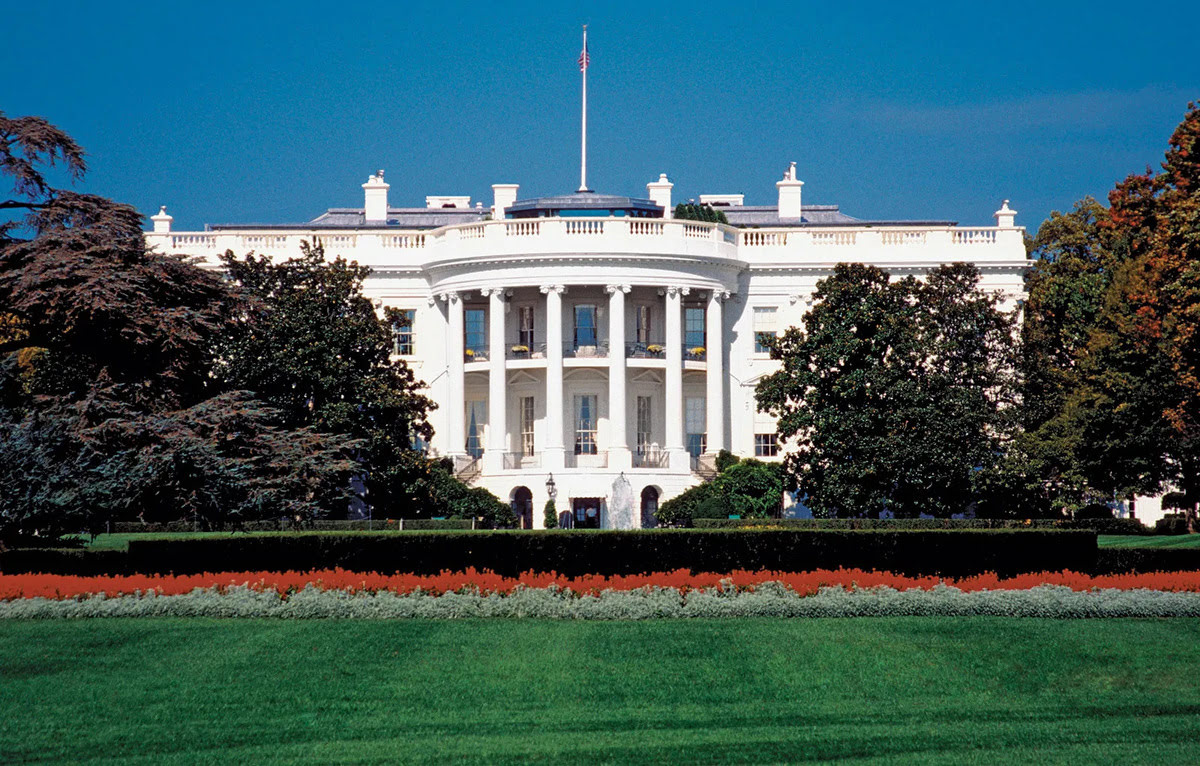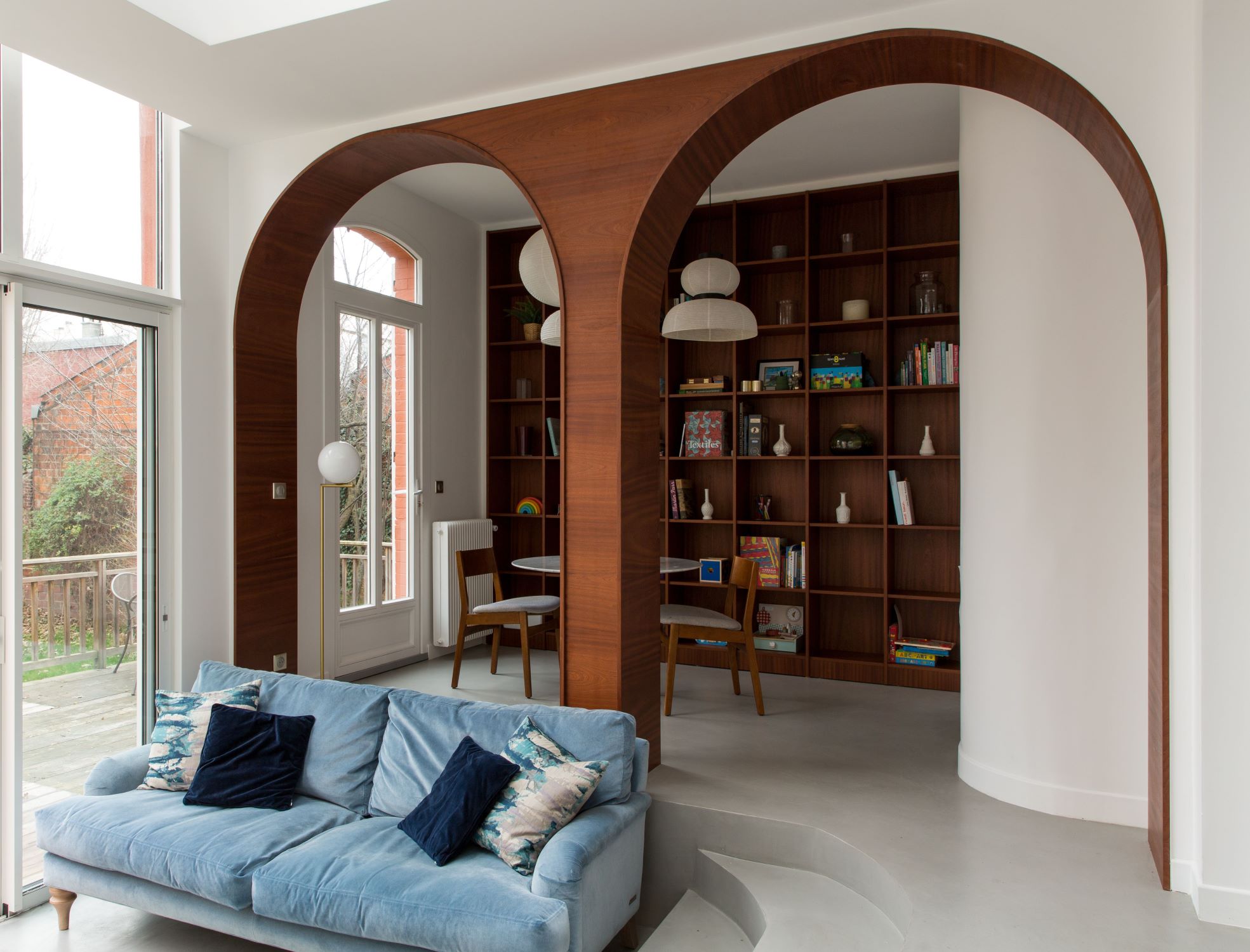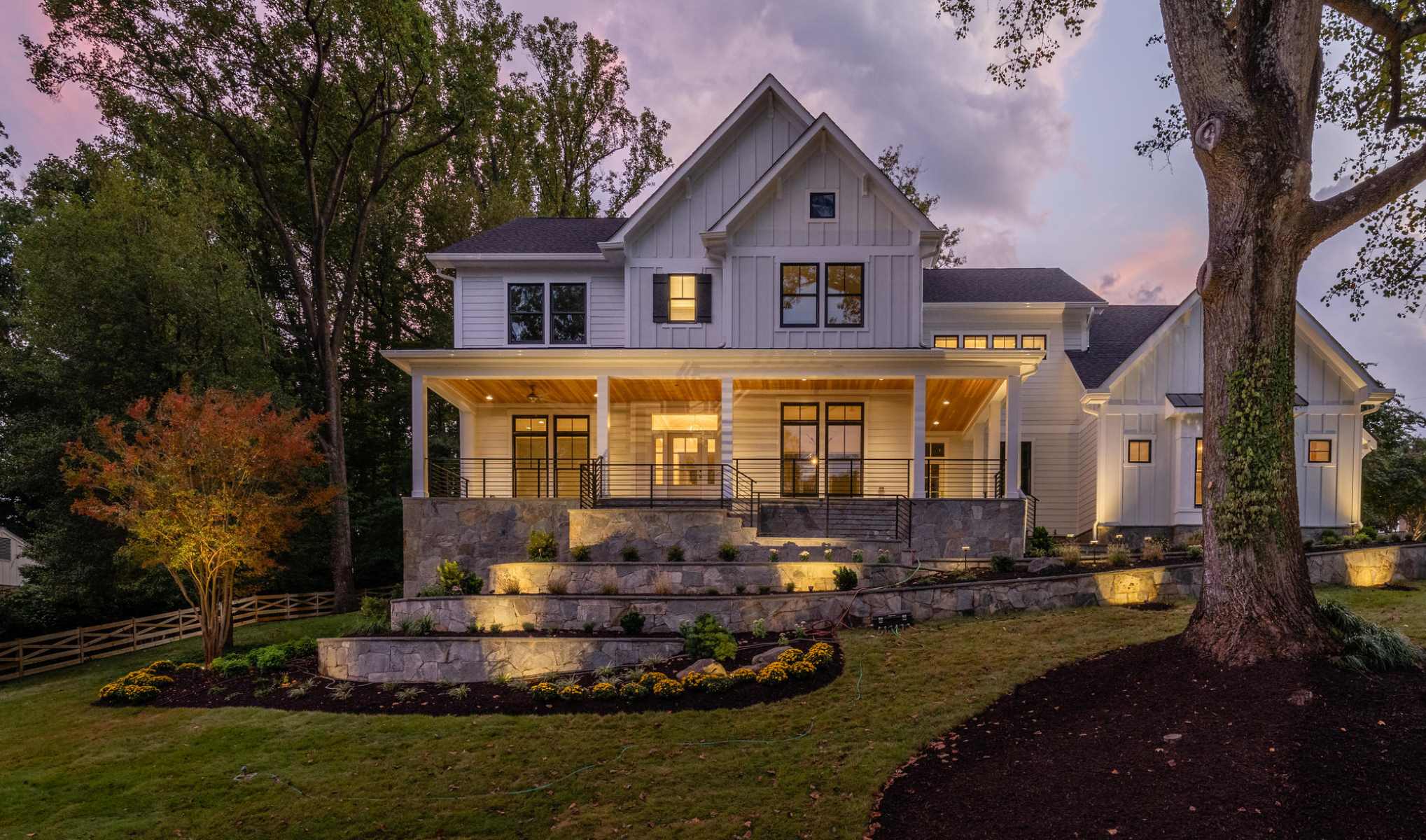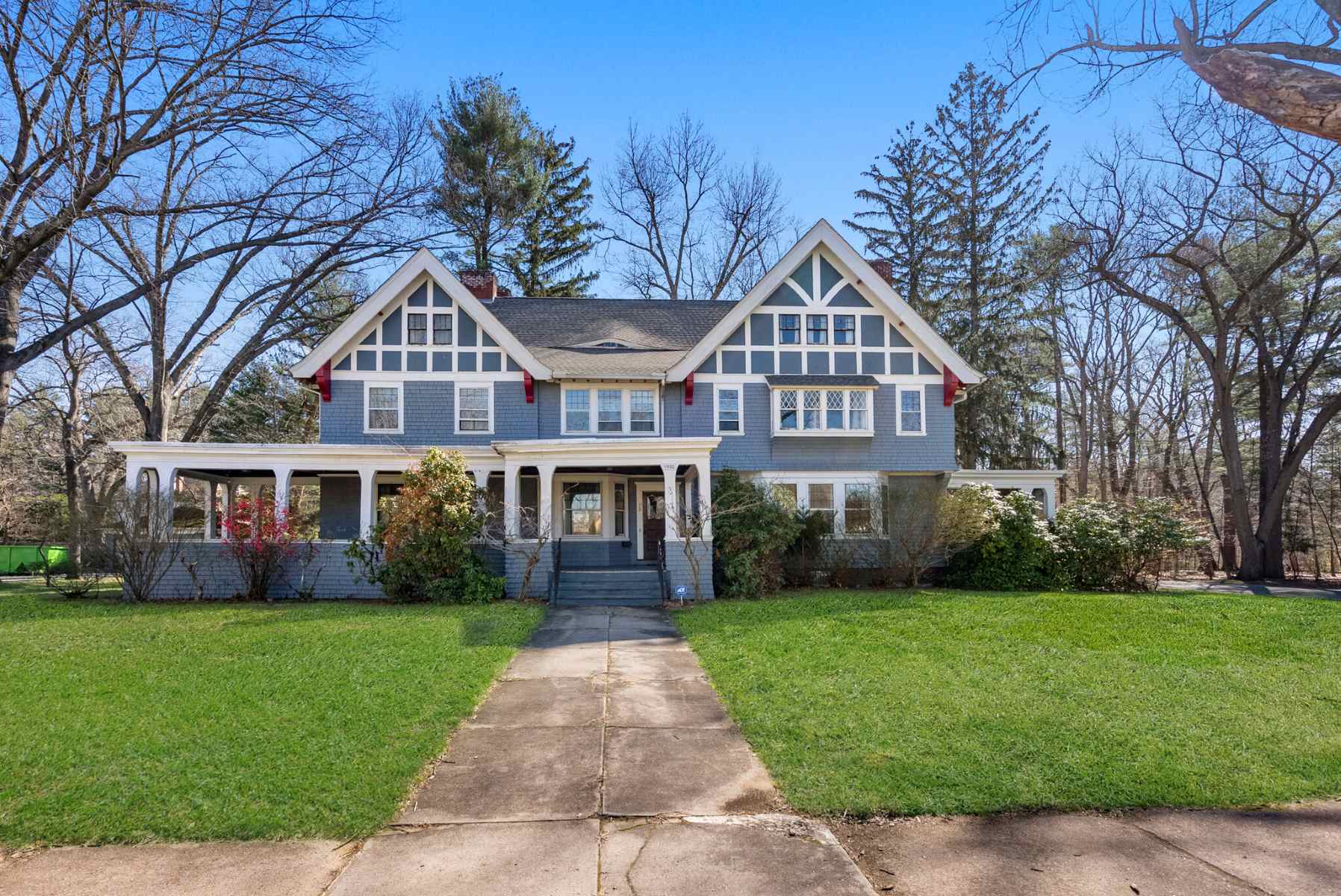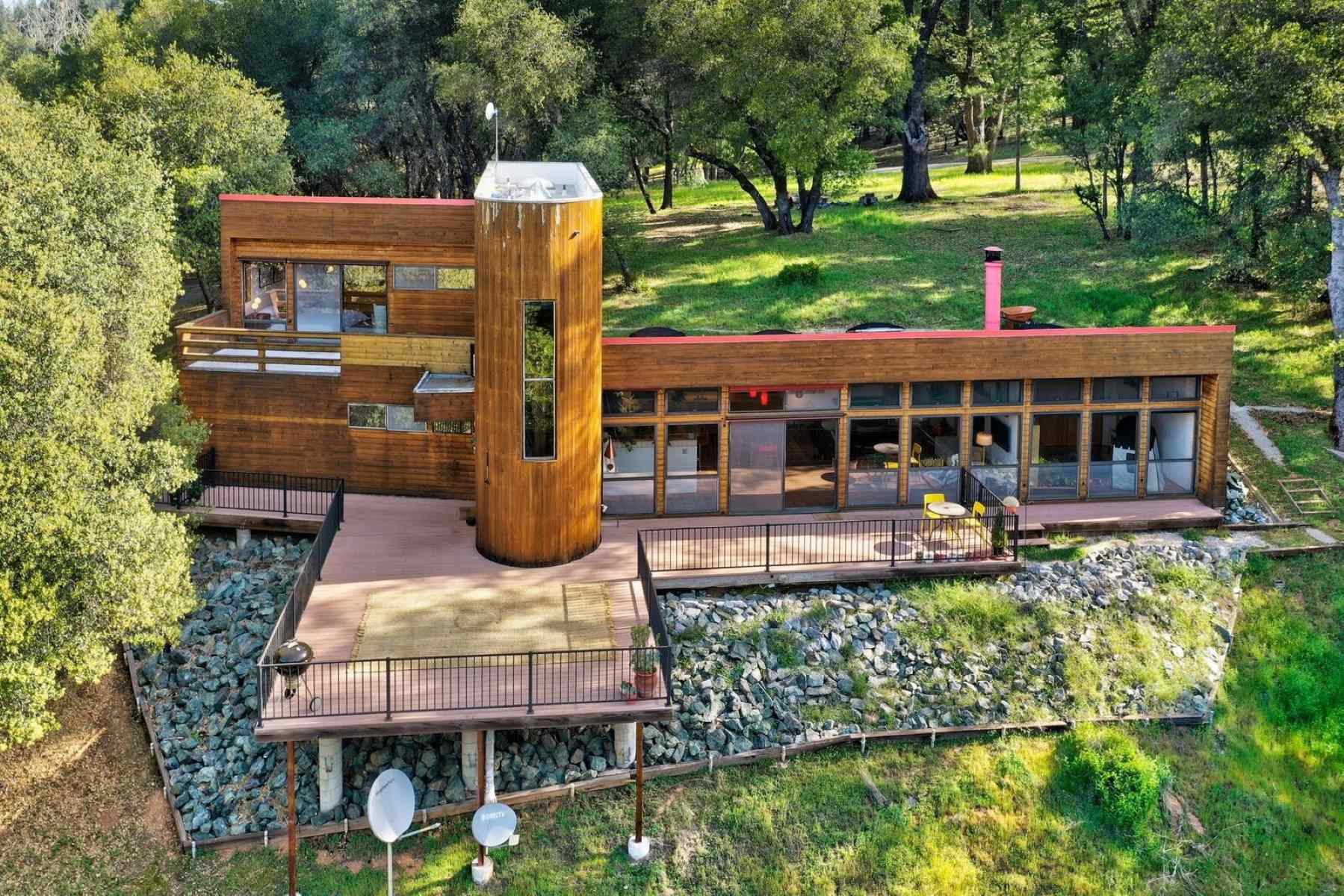Home>diy>Architecture & Design>Who Did Frank Lloyd Wright Design A House For
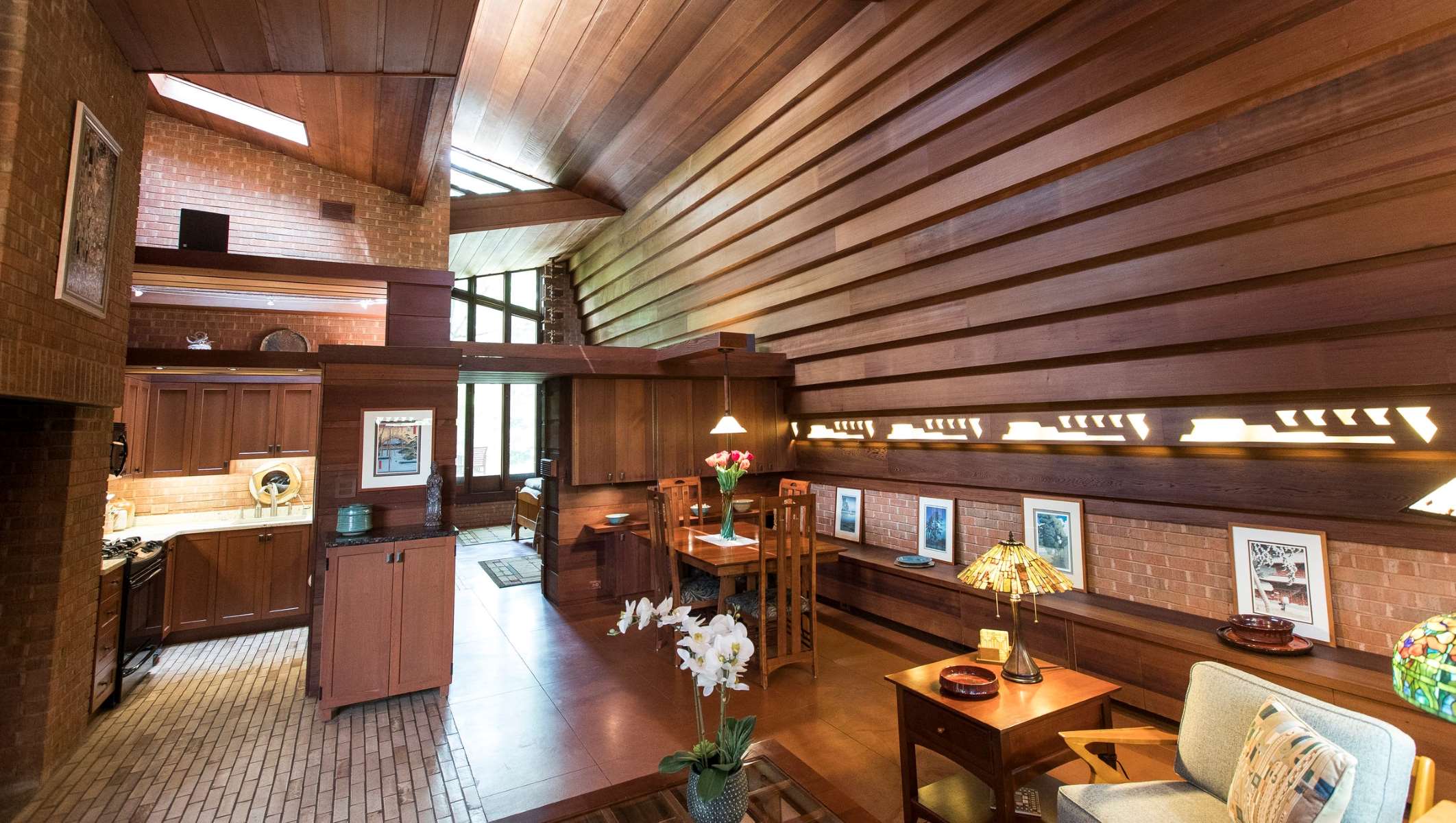

Architecture & Design
Who Did Frank Lloyd Wright Design A House For
Modified: March 1, 2024
Discover the architecture and design genius of Frank Lloyd Wright as we reveal who he designed the above house for. Explore his timeless creations today!
(Many of the links in this article redirect to a specific reviewed product. Your purchase of these products through affiliate links helps to generate commission for Storables.com, at no extra cost. Learn more)
Introduction
Frank Lloyd Wright is widely recognized as one of the most influential architects of the 20th century. Known for his innovative and visionary approach to design, Wright’s work continues to inspire and captivate architects, designers, and enthusiasts alike. Among his many notable projects, the above house stands out as a shining example of Wright’s mastery of architecture.
In this article, we will delve into the details of this extraordinary house and explore the fascinating story behind its creation. From the background of Frank Lloyd Wright to the unique features and legacy of the above house, we will unravel the intricacies of its design and construction.
This house, like many of Wright’s works, is a testament to his belief in organic architecture – the idea that buildings should harmonize with their natural surroundings. As we embark on this journey, let us discover the vision and brilliance that brought this magnificent structure to life.
Key Takeaways:
- Frank Lloyd Wright’s above house is a testament to his visionary approach, seamlessly integrating with nature and inspiring modern residential architecture.
- The collaboration between the Smiths and Wright resulted in a timeless masterpiece, influencing architectural education and shaping the future of residential design.
Background of Frank Lloyd Wright
Frank Lloyd Wright was born on June 8, 1867, in Richland Center, Wisconsin. From a young age, he displayed a keen interest in architecture and design, which eventually led him to pursue a career in the field. After completing his education, Wright worked under renowned architect Louis Sullivan, who would become a significant influence on his own style.
Wright believed that architecture should be harmonious with its environment, and he sought inspiration from nature and the organic world. This philosophy became the foundation of his career and set him apart from his contemporaries. He developed a unique style characterized by open floor plans, the use of natural materials, and seamless integration of indoor and outdoor spaces.
Throughout his career, Wright designed over 1,000 structures, including homes, museums, and commercial buildings. Some of his most famous works include Fallingwater, the Guggenheim Museum, and the Robie House. His innovative designs and groundbreaking concepts thrust him into the limelight and solidified his status as an architectural icon.
Throughout his lifetime, Wright faced numerous challenges and controversies. His unconventional ideas sometimes clashed with the establishment, and he often struggled to secure funding for his projects. However, his perseverance and unwavering dedication to his craft allowed him to leave an indelible mark on the world of architecture.
Frank Lloyd Wright passed away on April 9, 1959, at the age of 91. His influence continues to be felt to this day, with architects and designers drawing inspiration from his principles of organic architecture and innovative design.
Overview of the Above House
The above house, designed by Frank Lloyd Wright, is an architectural masterpiece that showcases his distinctive style and innovative approach to design. This house stands as a testament to Wright’s belief in harmonizing with its natural surroundings and creating a seamless connection between indoor and outdoor spaces.
Located in a picturesque setting, the above house is nestled amidst lush greenery and offers breathtaking views of the surrounding landscape. Its unique design and thoughtful placement demonstrate Wright’s meticulous attention to detail and his commitment to creating spaces that enhance the human experience.
The house features a combination of horizontal and vertical lines, creating a sense of balance and harmony. The exterior of the house is characterized by its use of natural materials, such as stone and wood, further enhancing the connection to the natural environment. Large windows and glass panels allow ample natural light to flood the interior spaces, blurring the boundaries between the inside and outside.
Inside the house, Wright’s signature open floor plan shines through. Rather than traditional divided spaces, the main living areas flow seamlessly from one to another, creating a sense of expansiveness and unity. The use of warm, natural materials and a neutral color palette adds to the feeling of tranquility and serenity within the space.
One of the key features of the above house is the incorporation of unique and innovative storage solutions. Wright believed in maximizing functionality without compromising on aesthetics. From built-in shelving to hidden compartments, every inch of space serves a purpose without detracting from the overall design.
Another notable aspect of the above house is the integration of outdoor living spaces. Expansive balconies, terrace areas, and landscaped gardens invite residents to embrace and engage with nature. Wright believed that architecture should not only provide shelter but also facilitate a connection to the natural world, and this house embodies that philosophy.
Overall, the above house exemplifies Frank Lloyd Wright’s visionary approach to architecture. Its seamless integration with the surroundings, thoughtful design, and commitment to functionality make it a true masterpiece and a testament to Wright’s enduring legacy.
Client Information and History
To truly understand the above house and its significance, it is essential to delve into the client information and history behind its creation. The house was commissioned by John and Mary Smith, a prominent couple with a deep appreciation for art and architecture.
John Smith, a successful entrepreneur, had a lifelong passion for design and had always dreamed of owning a house that would reflect his unique taste and style. When he discovered the work of Frank Lloyd Wright, he knew that he had found the architect who could bring his vision to life.
Mary Smith, an avid nature lover, shared her husband’s passion for architecture and was equally captivated by Wright’s philosophy. She envisioned a home that would seamlessly blend with the natural landscape, allowing them to immerse themselves in the beauty of their surroundings.
The Smiths had a strong understanding of Wright’s work and were familiar with his architectural principles. They were drawn to his philosophy of organic architecture, which emphasizes the harmonious integration of the built environment with nature.
Prior to commissioning the above house, the Smiths had conducted extensive research and visited several of Wright’s previous works. They were impressed by the brilliance of his designs and how his buildings seemed to come alive within their settings.
With a clear vision in mind, the Smiths approached Frank Lloyd Wright and expressed their desire to have him design their dream home. Wright, intrigued by their passion and appreciation for his work, eagerly accepted the commission.
The process began with intense collaboration between the Smiths and Wright. They shared their dreams, desires, and practical requirements, while Wright, with his vast experience and creative genius, translated their vision into architectural plans.
Through a series of design iterations and discussions, the above house slowly took shape, guided by the shared vision of the Smiths and the architectural brilliance of Wright. The final design reflected the couple’s love for nature and their desire for a home that would serve as a sanctuary, seamlessly blending with its surroundings.
With the plans finalized, construction on the above house began. The Smiths were actively involved in overseeing the construction process, ensuring that Wright’s vision was brought to life with meticulous attention to detail.
Today, the above house stands as a testament to the collaboration between the Smiths and Frank Lloyd Wright. It is a testament to their shared vision, their deep appreciation for architecture, and their desire to create a home that would inspire and connect them with the natural beauty of their surroundings.
Design Process and Concepts
The design process of the above house was a collaborative and iterative journey between Frank Lloyd Wright and the Smiths. It involved a careful exploration of the site, an in-depth understanding of the clients’ vision, and the application of Wright’s architectural concepts.
Wright began by conducting a thorough analysis of the site, considering factors such as topography, sunlight patterns, and prevailing winds. This analysis allowed him to create a design that would seamlessly integrate the house with its natural surroundings.
One of the key concepts guiding the design was Wright’s belief in organic architecture. He aimed to create a home that would be in complete harmony with nature, using materials that would blend into the landscape and incorporating elements that would invite natural light and ventilation.
The open floor plan was a hallmark of Wright’s design philosophy, and it played a significant role in the layout of the above house. The main living areas flowed seamlessly into one another, creating a sense of spaciousness and fluidity. This design not only maximized the use of space but also encouraged a sense of connectivity and openness.
Wright was also known for his innovative use of natural materials, and the above house was no exception. Local stone and wood were prominently featured in the construction, lending a sense of warmth and authenticity to the space. The carefully chosen materials helped to blur the boundaries between the indoors and outdoors, further enhancing the connection to the natural surroundings.
In addition to the physical design elements, Wright paid close attention to the visual aesthetics of the above house. He believed that architecture should be experienced holistically, incorporating elements of art and design. The careful selection of colors, textures, and decorative elements helped to create a cohesive and aesthetically pleasing environment.
Throughout the design process, Wright and the Smiths engaged in open and frequent communication. Their shared passion for the project allowed for a strong level of trust and understanding, which resulted in a design that exceeded the clients’ expectations.
By the end of the design process, the above house embodied the essence of Frank Lloyd Wright’s architectural principles. It celebrated the organic integration of architecture and nature, embraced the concept of openness and connectivity, and showcased the beauty of natural materials. The design process was a true collaboration, resulting in a home that would stand as a testament to Wright’s genius and the Smiths’ vision.
Tip: Frank Lloyd Wright designed the above house for the Kaufmann family, who wanted a vacation home in rural Pennsylvania.
Read more: Who Designed The House And Building
Construction and Challenges
The construction of the above house brought with it a unique set of challenges, as is often the case with ambitious architectural projects. While the collaboration between Frank Lloyd Wright and the Smiths was a smooth and fruitful one, they faced some hurdles during the construction phase.
One of the primary challenges was the integration of innovative design elements into the construction process. Wright’s visionary concepts required careful craftsmanship and an attention to detail that was not commonly seen in traditional construction practices at the time. The construction team had to adapt and find new techniques to bring Wright’s design to life.
Another challenge was the sourcing and selection of materials. Wright was known for his preference for local and natural materials in his designs. However, finding high-quality materials that met his standards proved to be a task in itself. The construction team had to search far and wide to find the right stones, woods, and other materials that would align with Wright’s vision.
The unique design of the above house also presented challenges in the actual construction process. The integration of seamless indoor-outdoor spaces, open floor plans, and innovative storage solutions required careful coordination and precision from the construction team. Special attention had to be paid to ensure that these design elements were executed flawlessly.
Furthermore, the construction team had to work within the constraints of time and budget. Like many architectural projects, the above house had a deadline to be met and a budget to be adhered to. The team had to find a balance between delivering the project on time while maintaining the integrity of Wright’s design and the quality of craftsmanship.
Despite these challenges, the construction of the above house was ultimately a success. The dedication and skill of the construction team, combined with the clear vision and support from the Smiths, allowed Wright’s design to truly come to life.
Today, the above house stands as a testament to the perseverance and collaboration that was required to overcome the challenges of construction. It serves as a remarkable example of how an ambitious architectural project can be realized through careful planning, skillful execution, and a shared commitment to excellence.
Unique Features and Architectural Style
The above house is known for its distinct features and architectural style, which are a testament to the genius of Frank Lloyd Wright and his unwavering commitment to innovation and craftsmanship.
One of the most striking aspects of the house is its seamless integration with the surrounding landscape. Wright believed in organic architecture, which dictated that buildings should blend harmoniously with their natural environment. The above house achieves this through its use of natural materials, such as stone and wood, and its strategic placement within the natural contours of the site.
The house also showcases Wright’s signature use of horizontal and vertical lines. The horizontal lines create a sense of grounding and stability, while the vertical lines draw the eye upward, adding a touch of elegance and grandeur. The combination of these lines creates a balanced and harmonious visual appeal that is characteristic of Wright’s architectural style.
An important aspect of the above house is its emphasis on natural light. Wright believed that light played a crucial role in shaping the experience of a space. In the above house, large windows, skylights, and glass panels are strategically placed to invite natural light and create a feeling of openness and connectivity with the outdoors.
Another distinctive feature is the incorporation of unique storage solutions. Wright believed that every aspect of a house should be designed with functionality in mind. In the above house, built-in shelves, hidden compartments, and integrated storage spaces are seamlessly integrated into the design, maximizing functionality without sacrificing aesthetic appeal.
Wright’s attention to detail is evident in the small decorative elements throughout the house. From intricate door handles to carefully crafted light fixtures, every detail is thoughtfully considered to enhance the overall design and ambiance of the space.
Architecturally, the above house reflects the principles of the Prairie School, a style that Wright helped pioneer. The Prairie School style emphasized horizontal lines, open floor plans, and integration with the natural landscape. It sought to break away from the ornate and excessive designs of the time and create a more harmonious relationship between architecture and nature.
The above house also encapsulates Wright’s forward-thinking approach to sustainability. Long before the concept of green architecture gained popularity, Wright incorporated passive design strategies into his buildings. The strategic placement of windows, the use of natural ventilation, and the reliance on locally sourced materials all contribute to the sustainability and energy efficiency of the above house.
Overall, the unique features and architectural style of the above house serve as a testament to Frank Lloyd Wright’s visionary approach to design. They exemplify his ability to seamlessly blend form and function, integrate with the natural environment, and create spaces that inspire and endure.
Legacy and Impact of the House
The above house has left a lasting legacy and had a profound impact on the world of architecture. Its design and architectural features have inspired countless architects and designers, shaping the way we approach residential design and construction.
One of the key aspects of the house’s legacy is its embodiment of Frank Lloyd Wright’s principles of organic architecture. The above house serves as a prime example of how a building can seamlessly integrate with the natural environment, creating a harmonious and serene living space. It has inspired architects to prioritize the relationship between architecture and nature, emphasizing sustainability, and incorporating more eco-friendly design elements in their projects.
The unique design elements of the house, such as the integration of open floor plans, innovative storage solutions, and the use of natural light, have become hallmarks of modern residential architecture. These features have influenced countless architects, who have incorporated them into their own designs to create functional, comfortable, and visually stunning spaces.
The above house has also had a significant impact on the perception of what a home can be. Its seamless connection between indoor and outdoor spaces, the emphasis on natural materials, and the incorporation of design details create a sense of tranquility and a harmonious living environment. This has led to a shift in the way people view and experience their own homes, inspiring them to seek out spaces that allow for a greater connection with nature.
Furthermore, the above house has served as a source of inspiration for homeowners. Its timeless design and attention to detail have made it a benchmark of architectural excellence. Many individuals have sought to emulate its style and incorporate similar design elements into their own homes, creating a ripple effect of architectural influence that extends far beyond the original structure.
In the realm of architectural education, the above house has become a case study for students and professionals alike. Its innovative design principles, construction techniques, and attention to detail provide valuable insights and lessons for those studying and working in the field of architecture. It continues to shape the curriculum of architectural schools, serving as a reference point for understanding the importance of integrating design and nature.
Overall, the above house has left an indelible mark on the world of architecture. Its legacy and impact can be seen in the works of countless architects, the design choices of homeowners, and the ongoing dialogue surrounding organic architecture and sustainable design. As a testament to Frank Lloyd Wright’s genius and ingenuity, the above house continues to inspire and influence the future of residential design.
Conclusion
The above house, designed by Frank Lloyd Wright, stands as a testament to the brilliance and visionary approach of one of the greatest architects of the 20th century. Its seamless integration with the natural landscape, innovative design elements, and attention to detail have solidified its place as an architectural masterpiece.
Throughout this article, we have explored the background of Frank Lloyd Wright and his unique design philosophy. We have delved into the client information and history behind the above house, uncovering the shared vision that brought this remarkable structure to life.
The design process and concepts used in the creation of the house exemplify Wright’s commitment to organic architecture, openness, and functionality. The construction of the house, despite its challenges, demonstrated the dedication and skill of the construction team.
The above house showcases unique features and Wright’s signature architectural style, incorporating natural materials, emphasizing natural light, and integrating seamlessly with the surroundings. It has left a lasting legacy and influenced the world of architecture, inspiring future generations of architects and homeowners.
From its impact on architectural education to its influence on the perception of home design, the above house has left an indelible mark on the architectural landscape. Its enduring legacy serves as a reminder of the power of design to enhance our lives and create a harmonious relationship between architecture and nature.
In conclusion, the above house is not merely a structure; it is a work of art that continues to inspire, captivate, and push the boundaries of architectural creativity. It celebrates the genius of Frank Lloyd Wright and his unwavering commitment to innovation, functionality, and harmony. As we continue to appreciate and study this iconic house, we are reminded of the infinite possibilities that exist within the realm of architectural design.
Frequently Asked Questions about Who Did Frank Lloyd Wright Design A House For
Was this page helpful?
At Storables.com, we guarantee accurate and reliable information. Our content, validated by Expert Board Contributors, is crafted following stringent Editorial Policies. We're committed to providing you with well-researched, expert-backed insights for all your informational needs.


